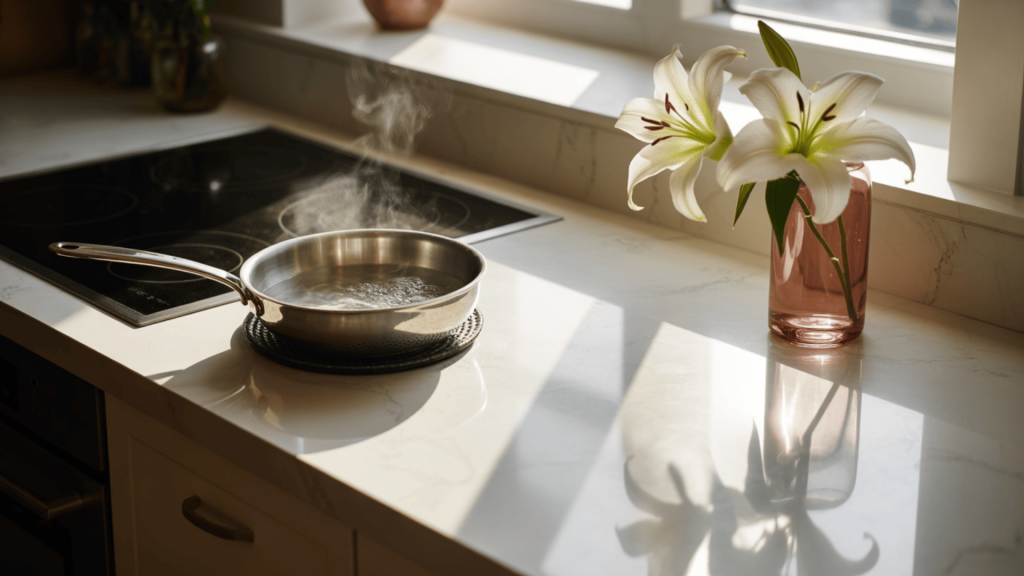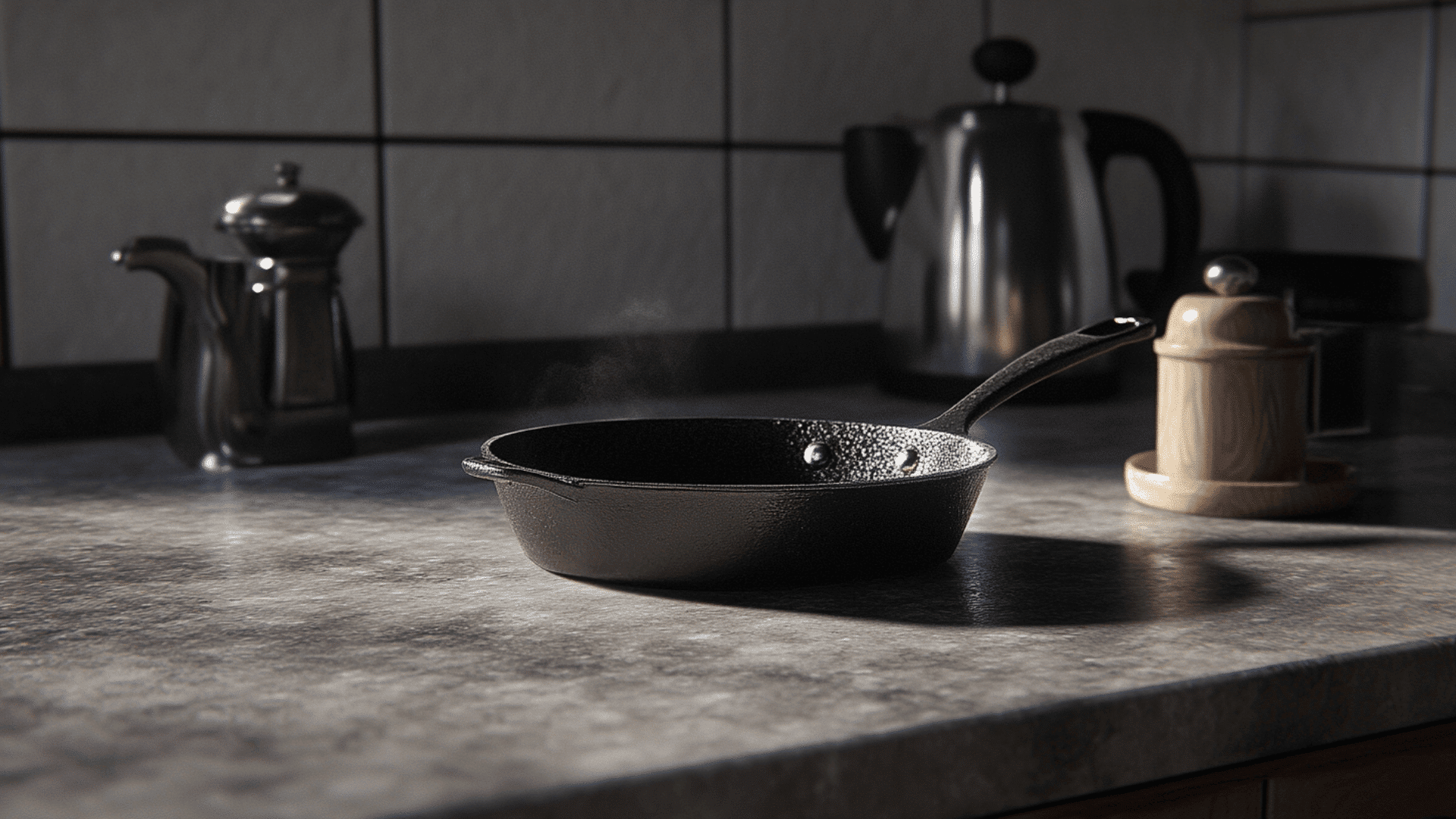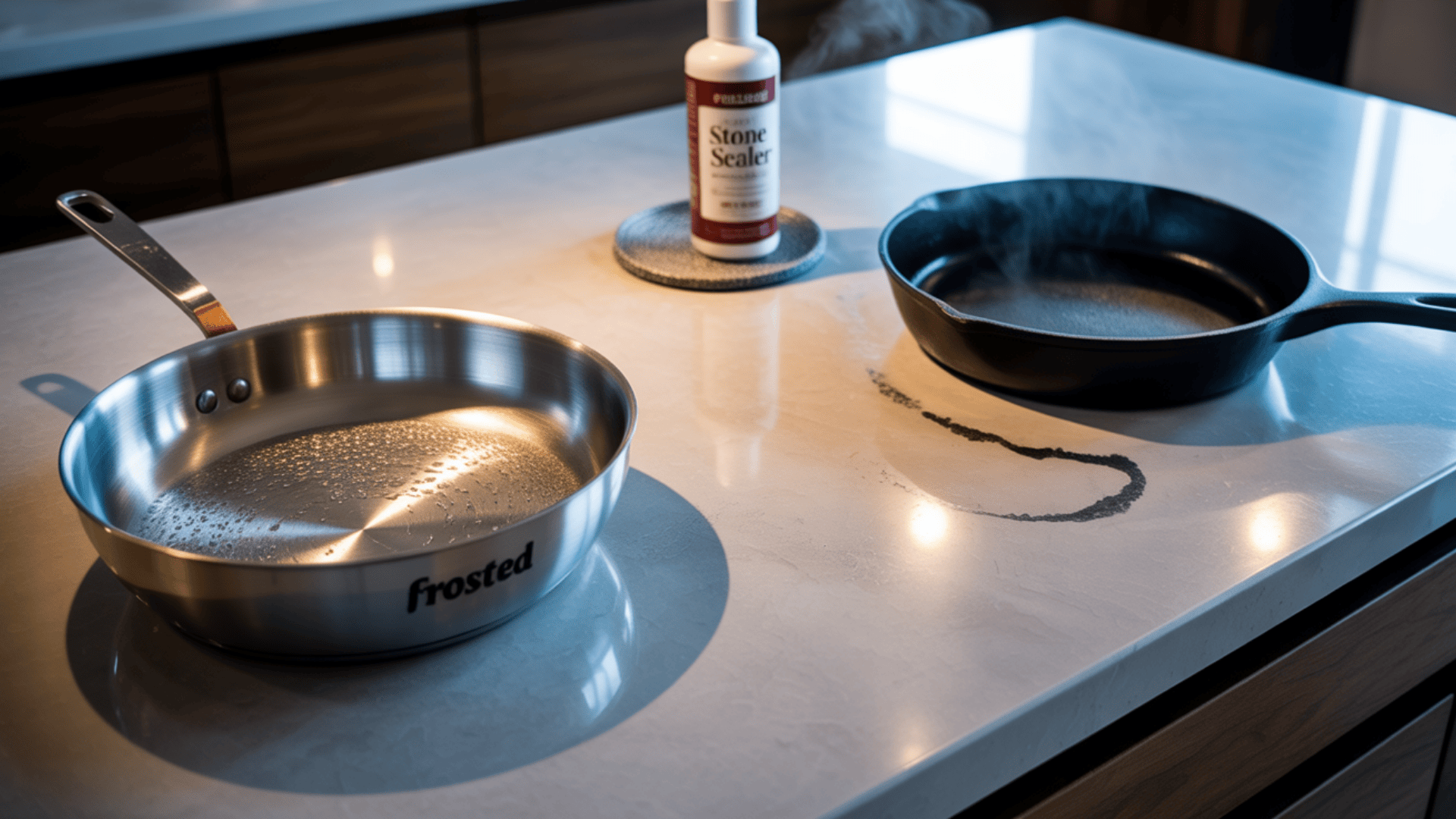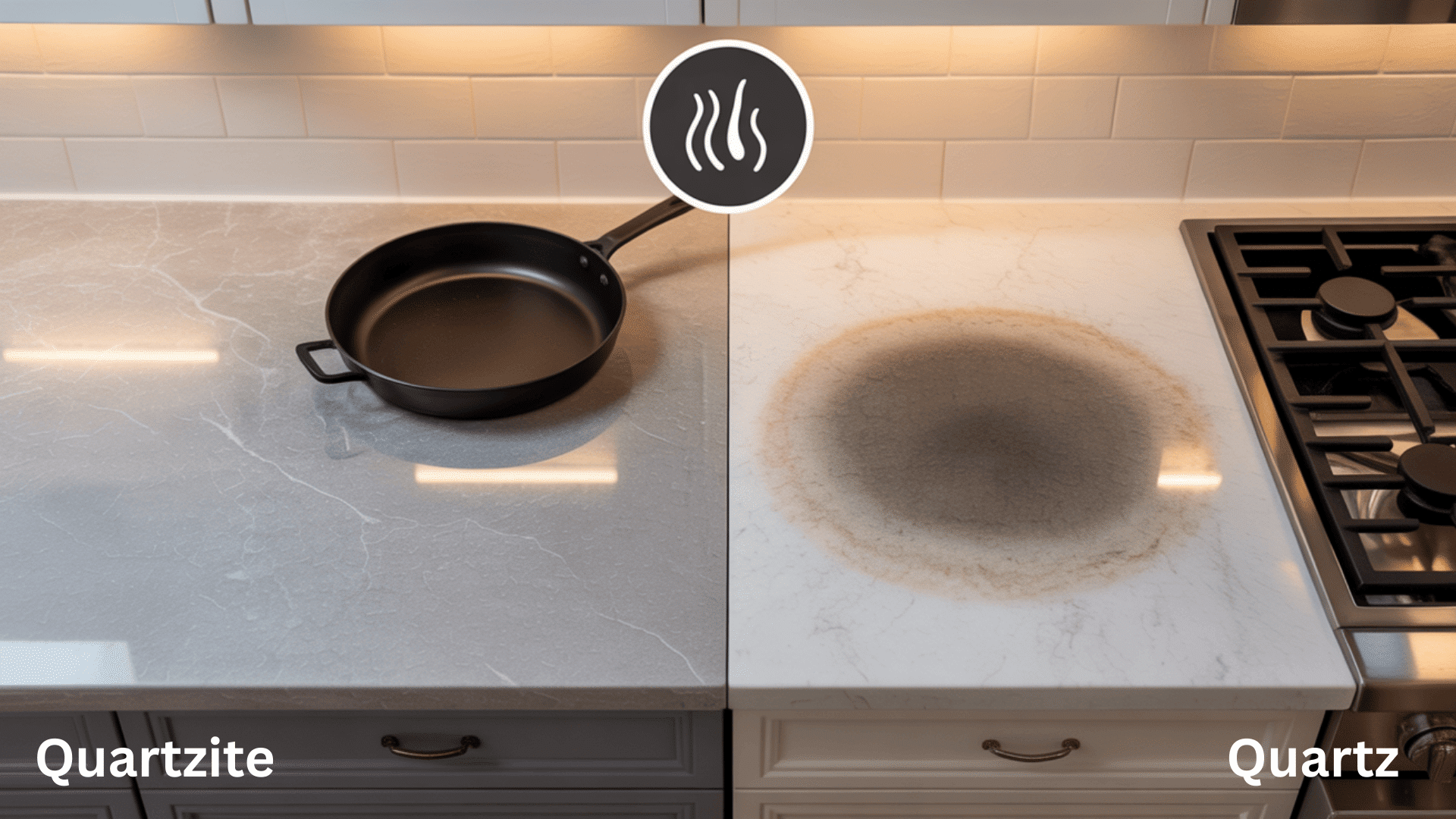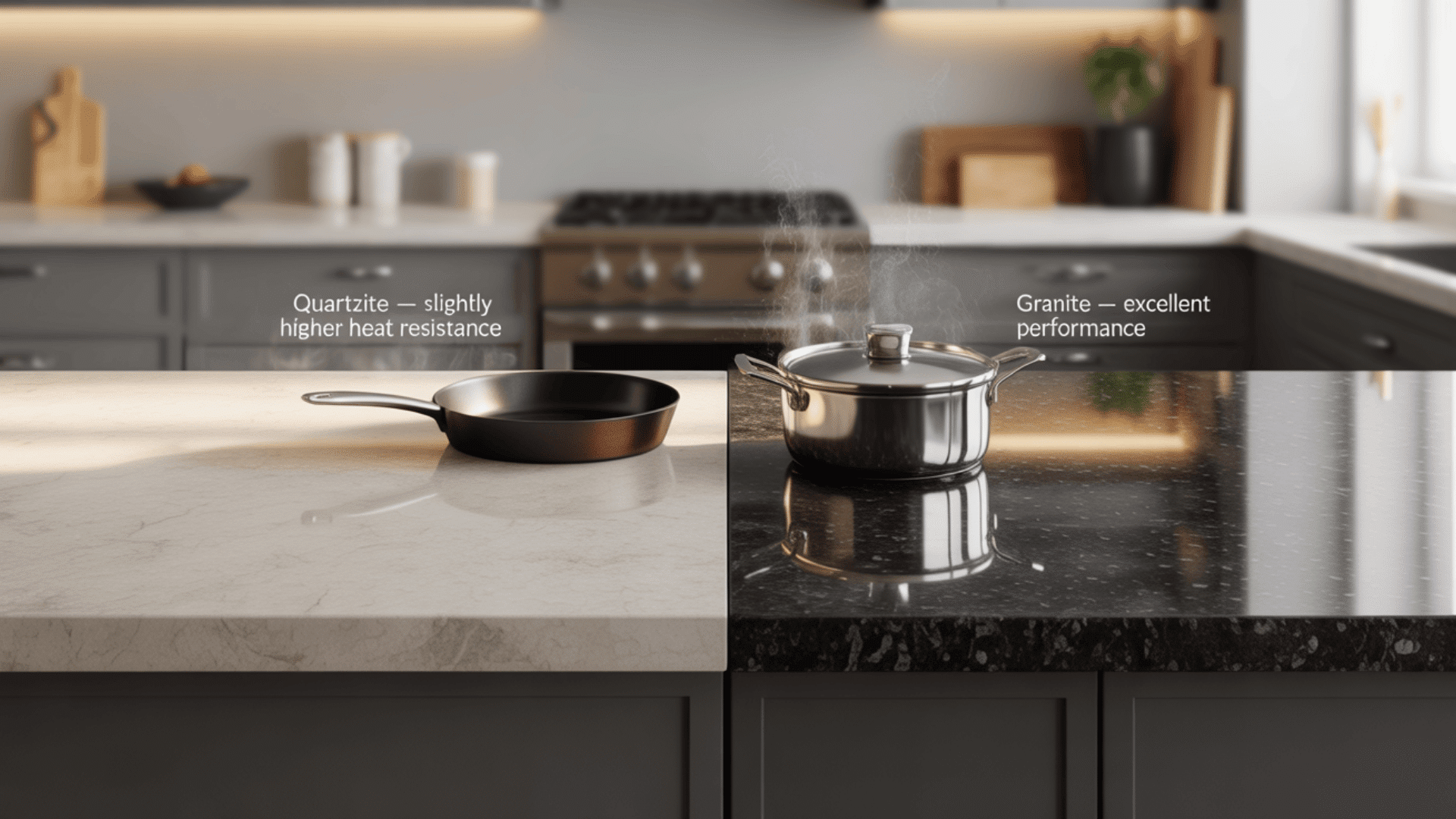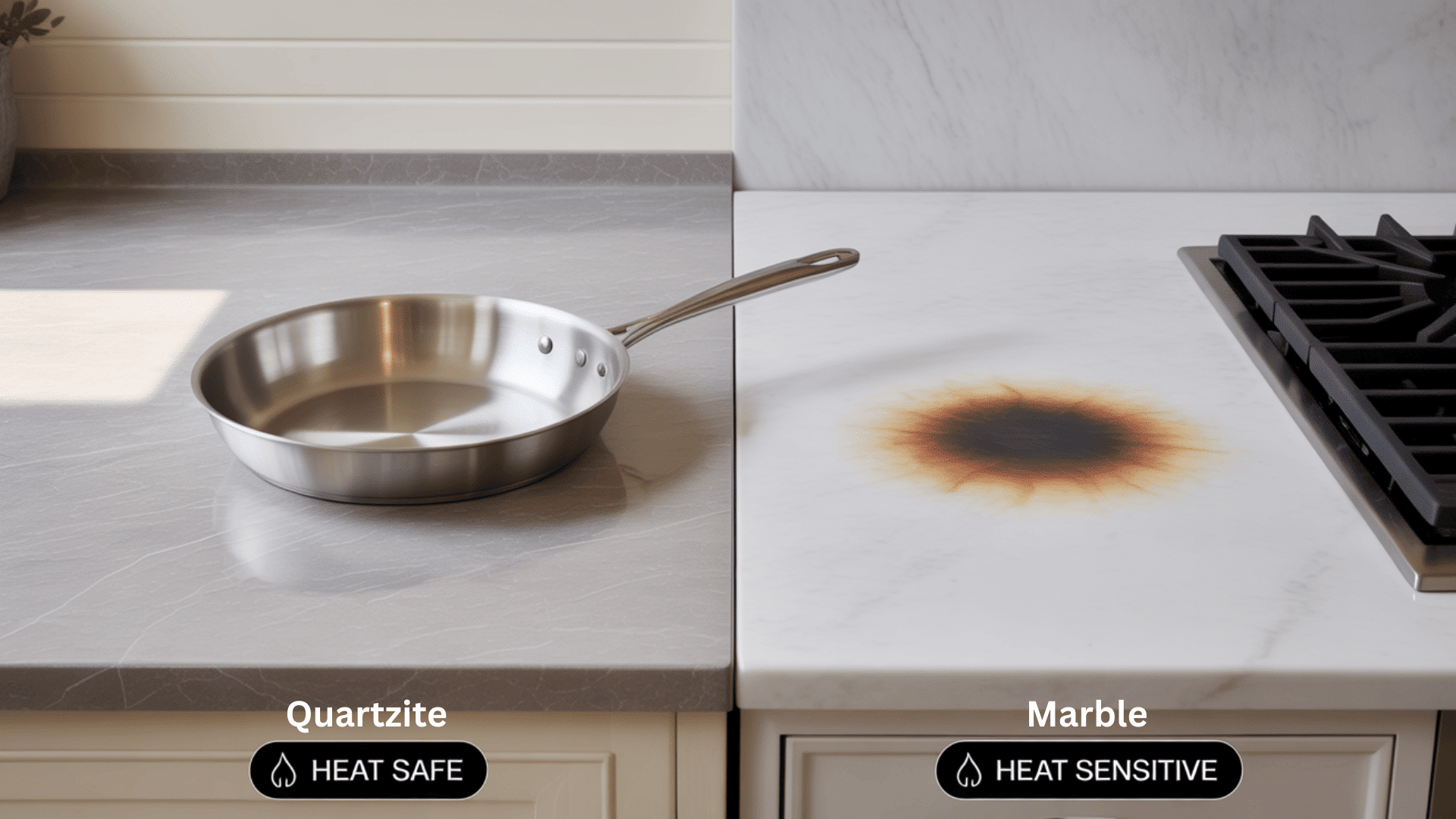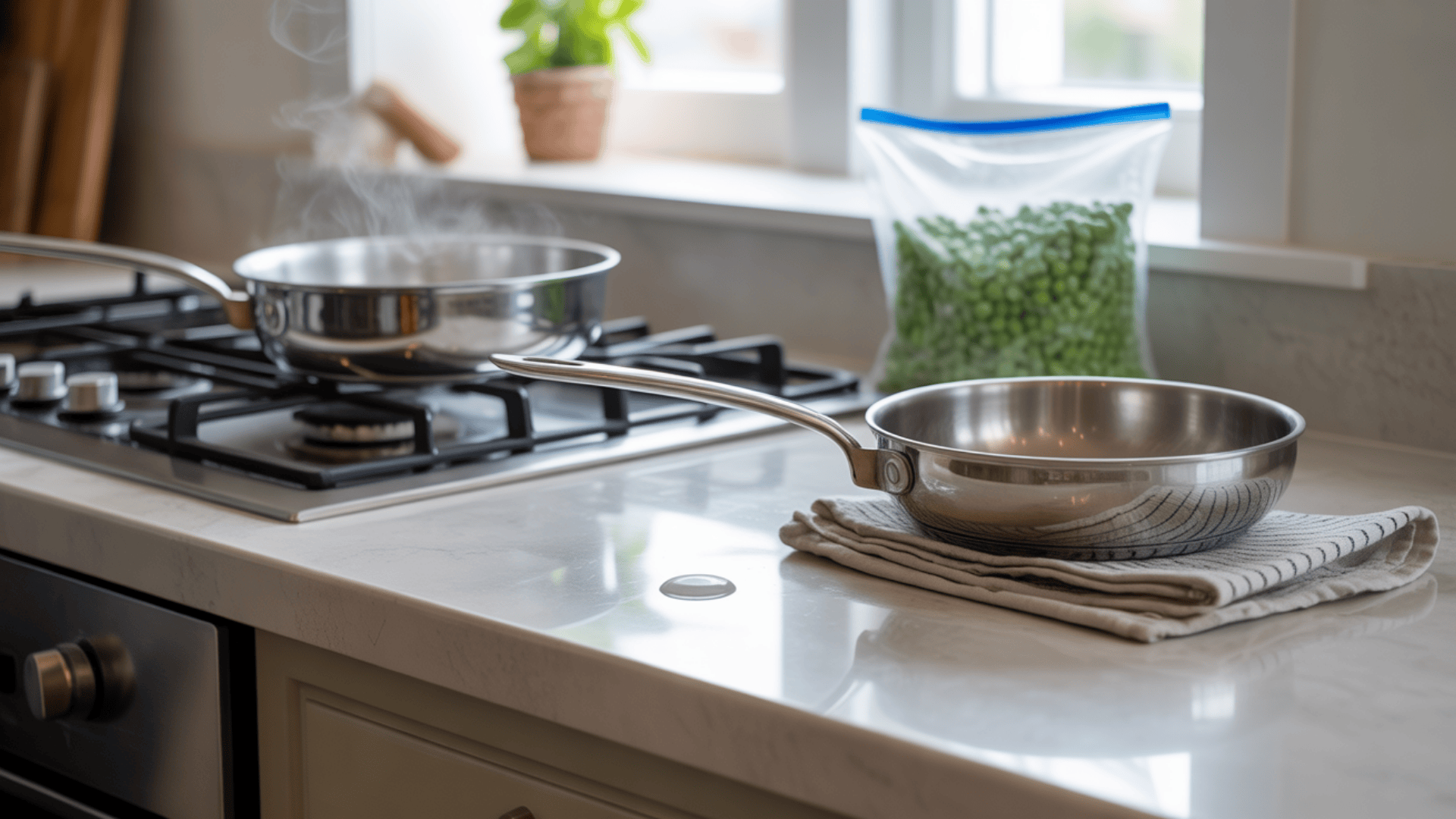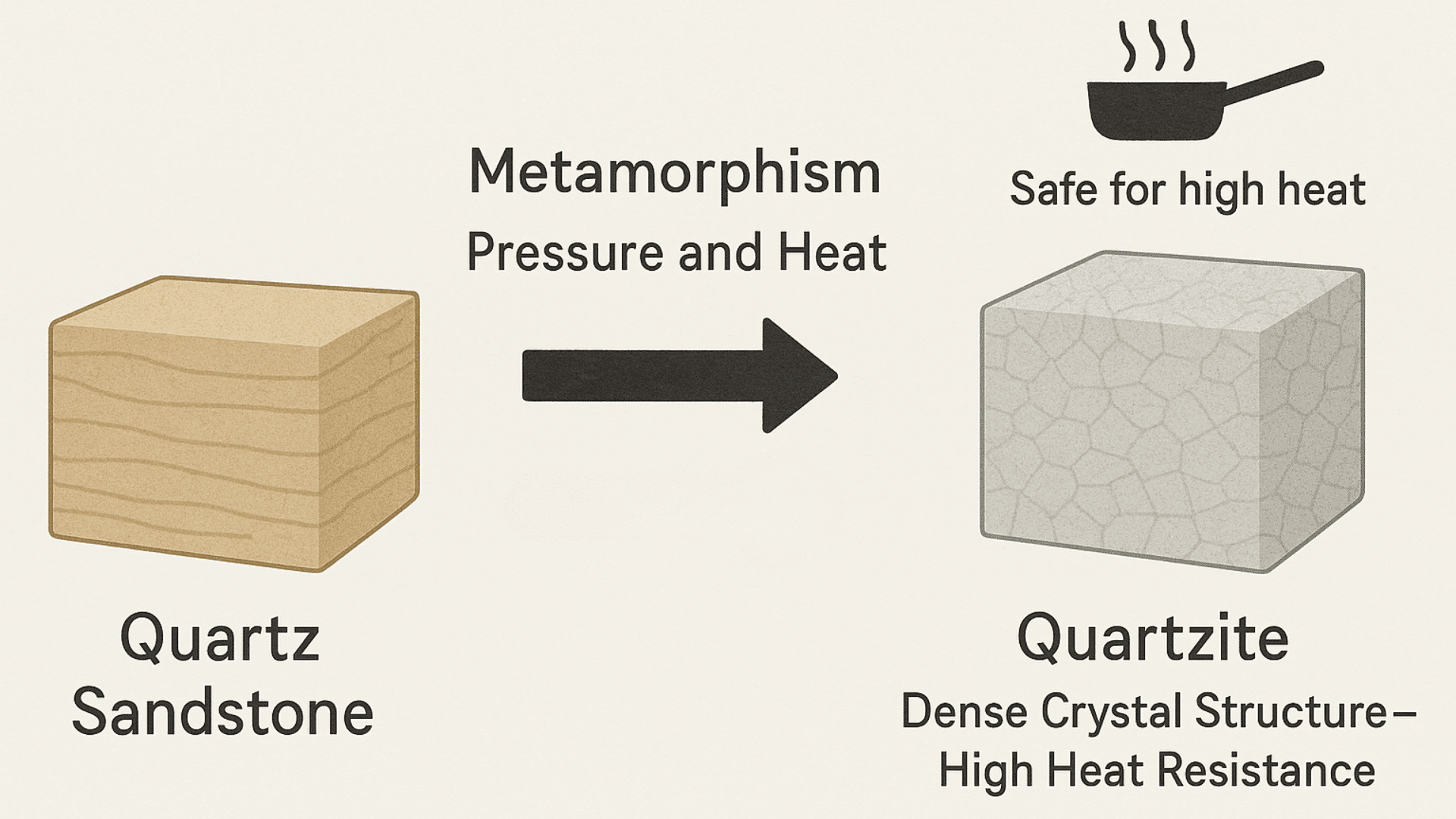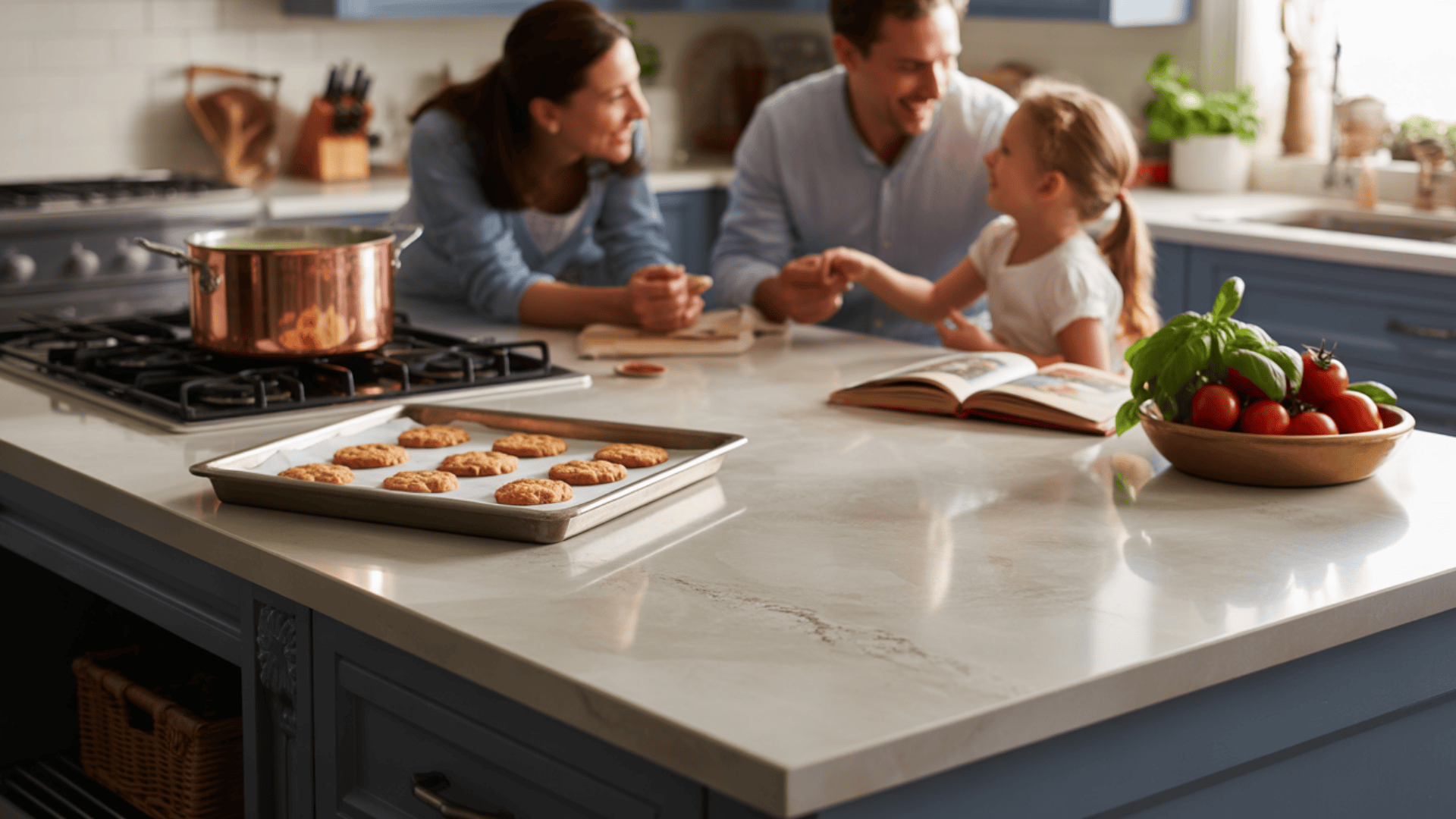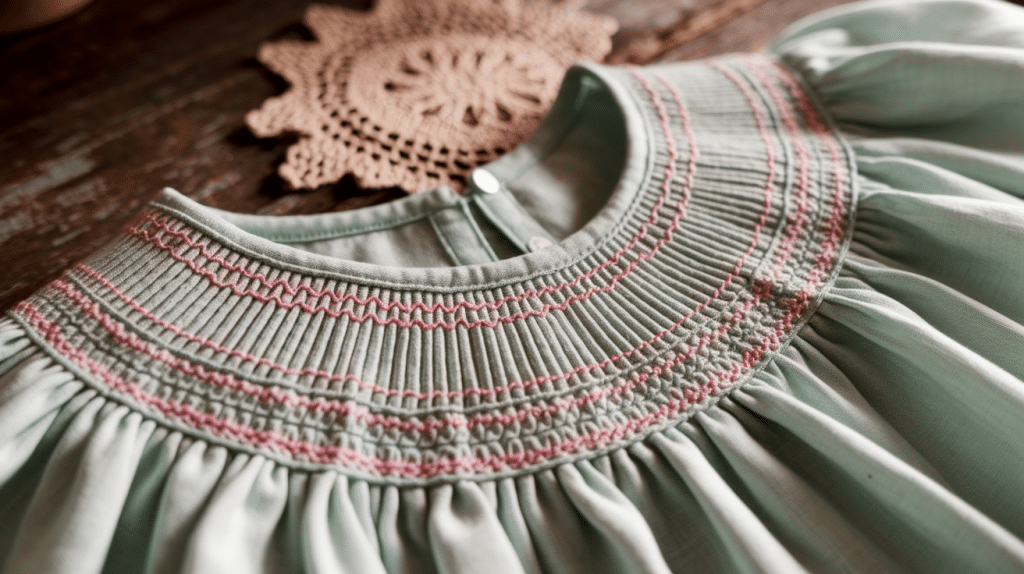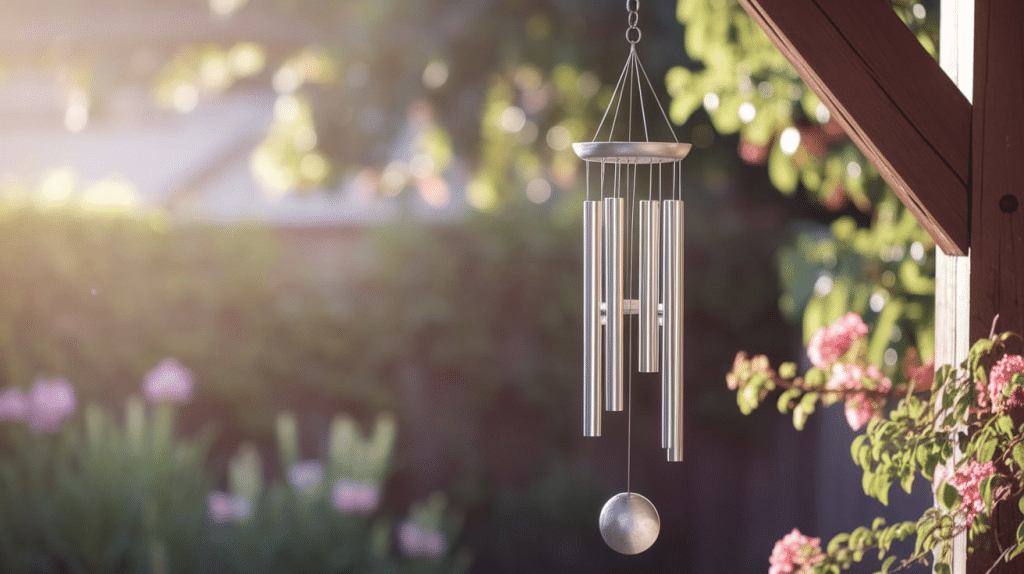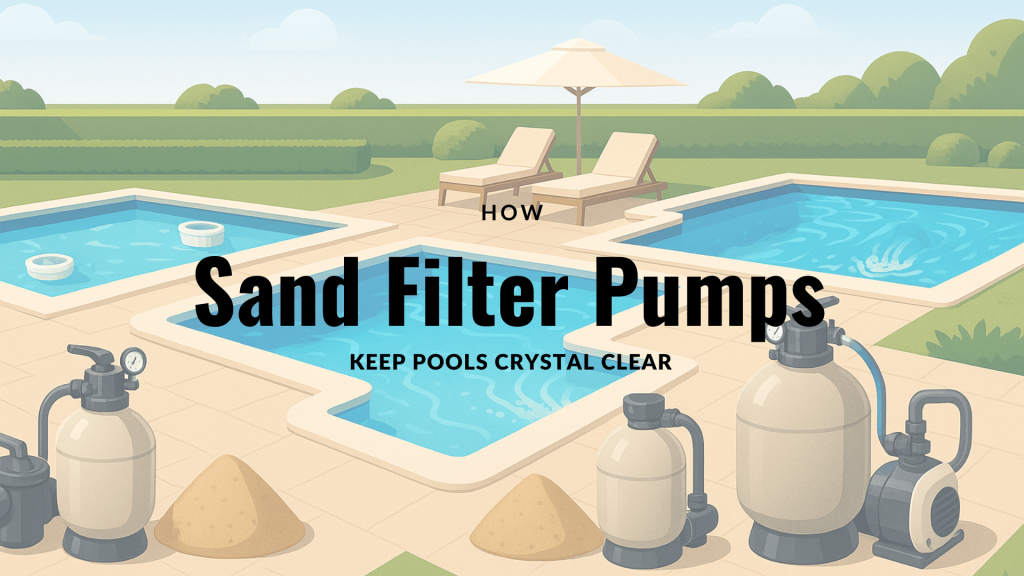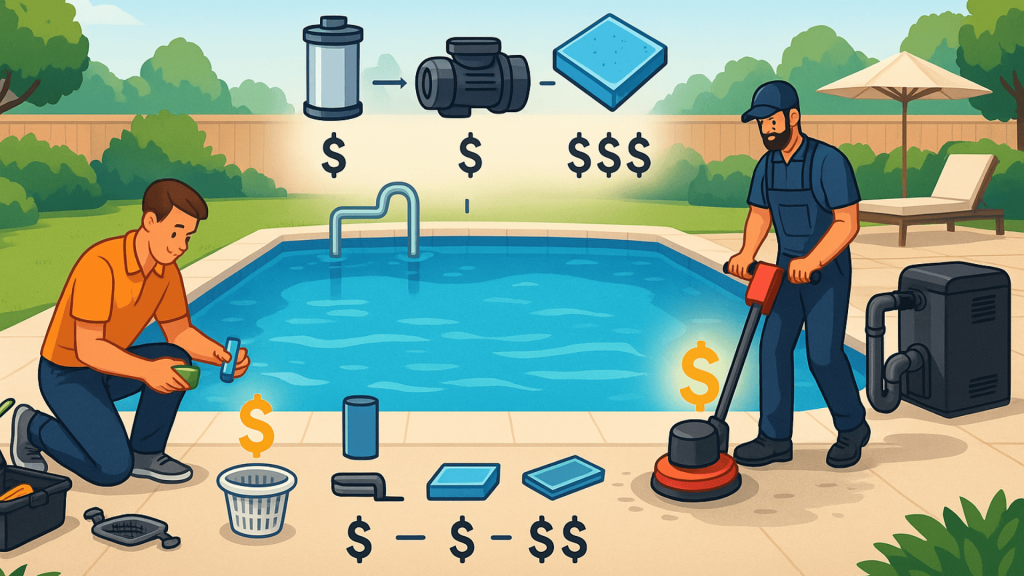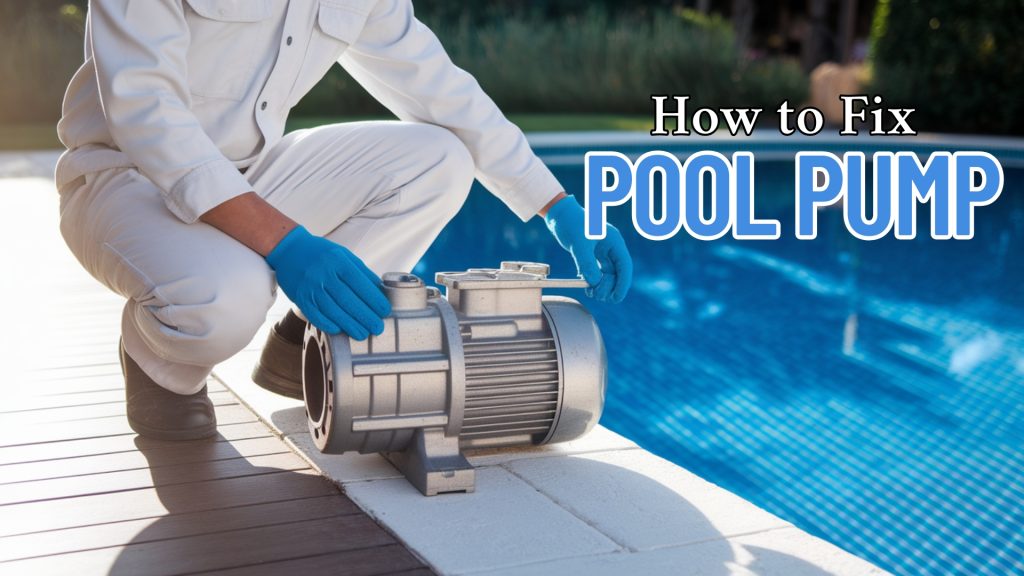Placing that steaming hot pan on your kitchen counter shouldn’t fill you with panic.
If you’ve chosen quartzite, you might be sitting on a heat-handling champion without even knowing it.
Many homeowners ask, “Is quartzite heat resistant?” while hovering over pots with pot holders, afraid to damage their beautiful countertops.
The kitchen should be a place of cooking joy, not stress about surface damage.
You’ll find that quartzite stands out from most countertop materials when it comes to heat resistance.
Ready to stop worrying every time you pull something from the oven?
Let’s uncover what makes quartzite so special when things get hot in the kitchen.
What You Really Need to Know About Quartzite and Heat!
Let’s talk straight about quartzite and heat.
If you’re planning a kitchen update or simply wondering if your counters can handle that hot pan, you’ve come to the right place.
Quartzite stands out among natural stones for its impressive heat handling.
When you’re rushing to set down a hot pot or need a spot for that cookie sheet fresh from the oven, quartzite won’t let you down.
Most homeowners ask: “Can I put hot things directly on my quartzite?”
The answer is generally yes, but with some caution.
Quartzite can withstand heat well, but it’s essential to note that the protective coating may change over time due to repeated heat exposure.
That said, using simple protection, such as trivets or hot pads, is still smart for achieving the longest-lasting finish.
This small step helps keep your beautiful counters in top shape for years to come.
How Heat Resistant is Quartzite?
Before diving into specifics, it’s worth knowing that quartzite stands among the most heat-tough natural stones available today.
This isn’t just marketing talk – it’s rooted in how this stone forms in nature.
1. The Natural Heat Tolerance of Quartzite
Quartzite begins its life as sandstone, which then transforms under massive heat and pressure deep in the Earth.
This natural cooking process creates a material that’s already been “heat-tested” by nature itself.
The result?
A counter material that won’t flinch when your hot pots come calling.
Most kitchen counters face hot items daily – from coffee pots to pans fresh off the stove.
Quartzite handles these challenges easily, with the ability to withstand temperatures as high as 1000°F without damage to its core.
2. How Quartzite Compares to Other Natural Stones
When ranked against other popular stone options, quartzite often emerges as the top choice for heat resistance.
Granite offers good heat protection in most kitchen settings.
However, quartzite’s tighter structure gives it a slight edge in managing high temperatures without issues.
3. Limits to Be Aware Of
No material is perfect, and quartzite has its limitations.
While rare, sudden temperature swings, such as placing a freezing item next to a hot one, can stress the stone.
But for normal cooking use, this isn’t something that should worry you.
Will Quartzite Crack or Get Damaged by Heat?
The short answer is: probably not.
There are some important things to know about keeping your quartzite in top shape when heat is involved.
Understanding Thermal Shock
Thermal shock happens when a material experiences a sudden, extreme temperature change.
Consider placing an ice-cold glass under hot water, it might crack from the sudden temperature change.
Quartzite is much tougher than glass, but the same basic science applies in extreme cases.
For example, if you took a pan straight from your freezer and put it on your quartzite counter while still ice-cold.
Then, immediately placing a hot pot next to it, you might create enough thermal stress to cause problems.
But this scenario is quite unlikely in normal kitchen use.
The Truth About Sealants and Heat
The stone itself handles heat beautifully, but most quartzite counters have a protective sealant on top.
This sealant is what might show wear from repeated heat exposure.
If you regularly place very hot items directly on the surface, you might notice the sealant becoming dull or worn in those spots.
Over time, this isn’t a structural problem – just a surface issue that can be fixed with a fresh coat of sealer.
This isn’t a structural problem – just a surface issue that can be fixed with a fresh coat of sealer.
Quartzite vs. Other Countertops in Heat Resistance
When choosing kitchen counters, the way materials handle heat often makes a significant difference in daily use.
Let’s compare quartzite with other popular options.
1. Quartzite vs. Quartz
Though they sound similar, these materials differ greatly in heat handling.
Quartzite is a natural stone, while quartz counters contain resins that can break down at about 300°F.
This means:
- Quartz may discolor when exposed to hot pans
- Quartz can actually melt or warp under extreme heat
- Quartzite stays stable at much higher temperatures
This makes quartzite the clear winner for kitchens where hot pots and pans are often placed directly on counters.
2. Quartzite vs. Granite
Both these natural stones perform well with heat, making this a close match:
- Both can handle hot pots without damage
- Quartzite has a slight edge in maximum heat resistance
- Neither will it scorch or burn under normal kitchen conditions
The difference is small enough that most homeowners would be satisfied with either option for heating.
3. Quartzite vs. Marble
This comparison shows a much bigger gap:
- Marble can etch and scorch at much lower temperatures
- Hot pans can leave permanent marks on marble
- Quartzite stays unmarked by heat that would damage marble
For serious cooks, quartzite offers much better heat protection than the more delicate marble, while still providing a similar look.
How to Protect Quartzite From Heat Damage?
While quartzite naturally handles heat well, a few simple habits can help keep it looking its best for years to come.
Simple Daily Practices
Taking care of your quartzite doesn’t require special skills or tools – just some basic awareness.
These easy steps protect both the stone and its protective coating:
- Use trivets or hot pads for very hot items from the oven
- Let the pans cool for a minute before setting them down
- Avoid placing frozen items directly next to hot ones
These simple steps take just seconds but can add years to your counter’s good looks.
Maintenance Tips for Long-Term Protection
Beyond daily habits, a few regular maintenance steps help quartzite stay beautiful:
- Check the sealant every 6-12 months by watching how water beads
- Reapply sealant when water starts to soak in rather than bead up
- Clean spills promptly to prevent them from working through worn sealant
With these basic care steps, your quartzite will keep its heat-resistant properties and good looks for many years.
The Science Behind Quartzite’s Heat Resistance
What makes quartzite so good with heat comes down to its basic makeup and how it forms.
This stone begins as sandstone, which is primarily composed of quartz sand.
When sandstone is squeezed and heated deep within the Earth during metamorphism, the sand grains fuse into a strong material.
The result ranks about 7 out of 10 on the Mohs hardness scale – harder than a knife blade and nearly as hard as diamonds.
This tight-knit structure also helps quartzite handle heat without damage.
Unlike manufactured quartz, which contains plastic-like resins that can melt, natural quartzite has no such weak points.
This all-mineral makeup means normal kitchen heat isn’t hot enough to cause problems for the stone itself.
Pros and Cons of Quartzite in High-Heat Kitchens
When deciding on quartzite for your kitchen, it’s helpful to weigh its strengths and limitations, especially if you frequently cook with high heat.
| PROS | CONS |
|---|---|
| Heat-resistant to hot cookware | Needs sealant reapplication over time |
| Scratch-resistant | Requires regular sealing |
| Marble-like beauty | Higher cost |
| Long-lasting | Heavy, needs sturdy support |
| Boosts home value | Not suitable for DIY installation |
Most homeowners find quartzite’s heat tolerance and durability worth the maintenance.
Your final decision should match your cooking style, budget, and maintenance preferences.
Is Quartzite Right for Your Kitchen?
Choosing the perfect counter material means matching it to how you actually use your kitchen.
Quartzite shines in certain situations and suits the needs of particular types of homeowners.
For many, the combination of beauty and durability makes quartzite a worthwhile consideration.
Here’s who might find it most valuable:
- Families who cook daily and need worry-free surfaces
- Home chefs who use lots of hot pots and baking sheets
- Homeowners wanting long-term value from their kitchen investment
- People who love marbles look but need more durability
- Anyone tired of babying delicate counter materials
While quartzite costs more upfront, its longevity and heat handling often make it worth the investment for busy kitchens.
Its ability to maintain its good looks while withstanding cooking challenges makes it a smart choice for many homes.
The Bottom Line
Now you know why quartzite has earned its spot as a top choice for heat-handling in busy kitchens.
Those gorgeous counters can take what your cooking throws at them, within reason.
No more hovering with trivets or racing to find pot holders.
A bit of common sense goes a long way in keeping your quartzite looking its best for years.
The peace of mind that comes with heat-resistant surfaces makes cooking more fun and your kitchen more functional.
Next time you pull that cast iron skillet from the stove, you can set it down with confidence.
Your quartzite counters are up to the task.
Are you team ‘always use trivets’ or team ‘counters should handle the heat’?
The debate is on in the comments!

